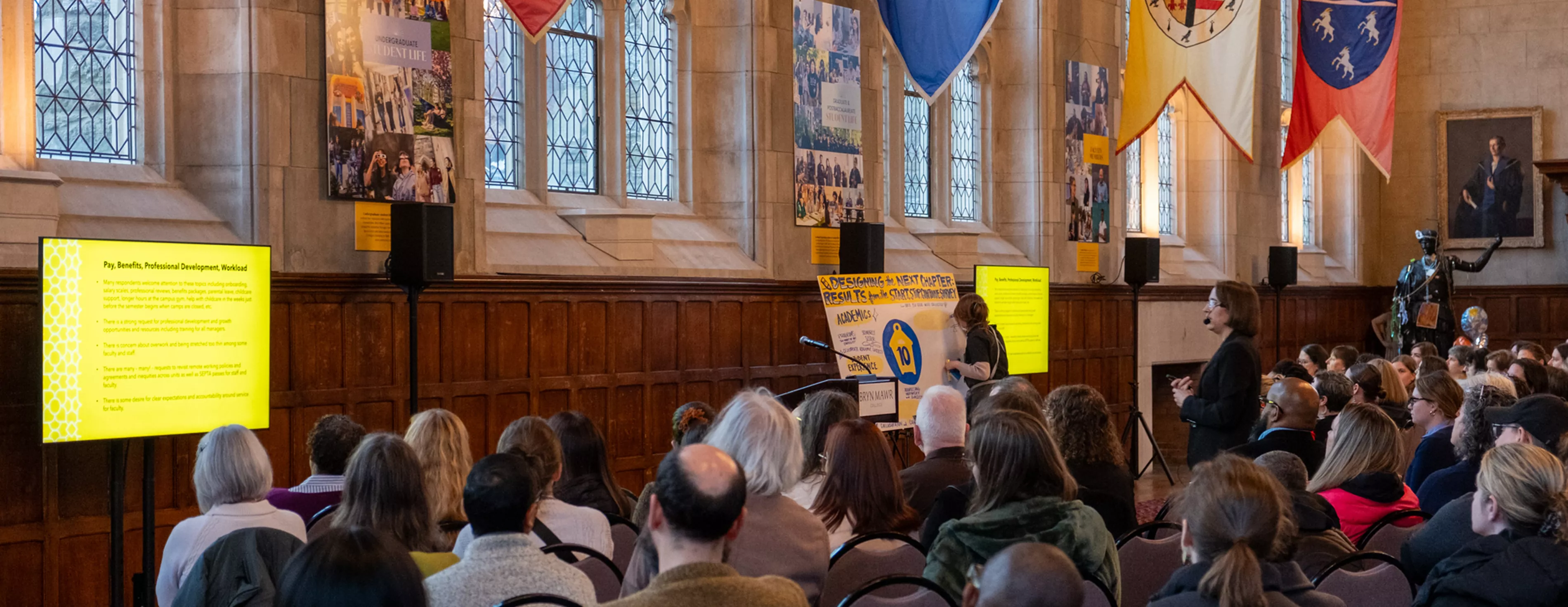
Strategic Visioning
President Wendy Cadge is leading a campus community conversation about our areas of focus for the next several years and beyond.
About Strategic Visioning
President Cadge is building on two years of strategic planning work completed before she arrived, as well as all that she learned in her first year in the role. In 2025-26, she is leading a collective effort to develop innovative approaches to the College’s next chapter through a strategic plan, a comprehensive physical plan for the campus, and pilot grants open to all members of the on-campus community. The process is guided by four questions centered on what will best support students and faculty today and into the future.
-
How do we prepare Bryn Mawr College to lead the liberal arts of the future as a research college with graduate programs?
-
What will the liberal arts need to consist of for undergraduates entering their lives, the workforce, etc., in the 2030s and 2040s? Students who will enter the College in 2035 are in fourth grade today.
-
How will undergraduate and graduate students live, learn, and how will we teach and engage with them inside and outside of the classroom?
-
What infrastructure – living and learning spaces, places to eat, academic and other buildings, operational systems, IT systems, people systems, etc. – will best support Bryn Mawr's operationalization of its mission in 2035?
Incorporating Past Work
In addition to the work the campus community did in 2024-25, President Cadge has undergone an in-depth review of the 2022-2024 strategic planning work done prior to her arrival.
Past Work, Future Vision
President Cadge has been reviewing the College’s previous strategic plans and shares them here for community reading and conversation.
- “Excellence in Action: the Vision for Bryn Mawr’s Undergraduate College” (Cassidy, 2019)
- "Four Priorities for 2013-15" (Cassidy, 2013)
- "Plan for Bryn Mawr" (McAuliffe, 2012)
- “Plan for a New Century” (Vickers, 2000)
- “Agenda for the Future" (McPherson, 1995)
- “Plan for Achieving Financial Equilibrium” (McPherson, 1993)

